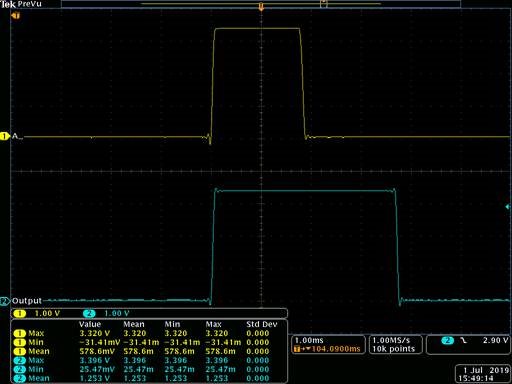Dear sir,
Our customer is using SN74LVC1G123, and below is the schematic:
Ideally, the output Q (pin5) should change form Low to High and produce a pulse when the input A (pin1) in the transition from High to Low, right??
But belows are we measired waveforms:
Sometimes the transition from Low to High of the input A would cause the output Q also change form Low to High.
Do you have any idea about it?? Or any comment??
Does the Cext (pin6) can be connected to GND??
Look forward your feedback. Thank you very very much.





